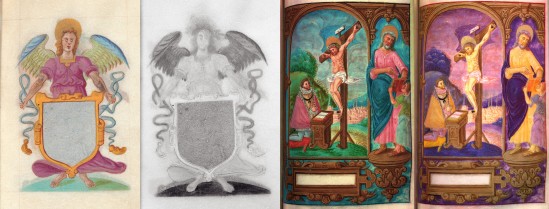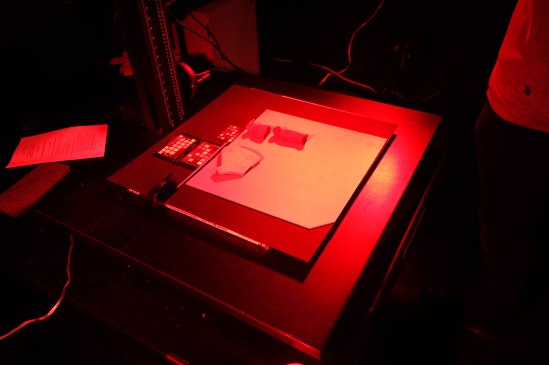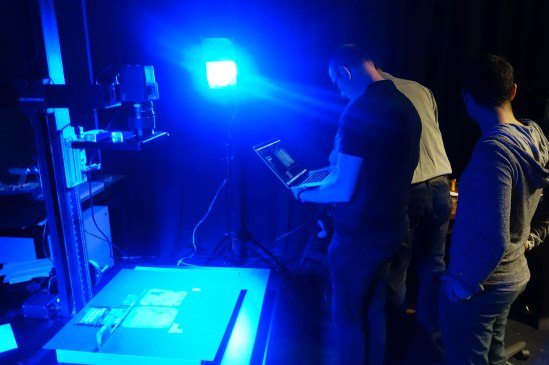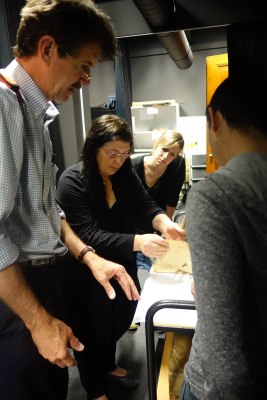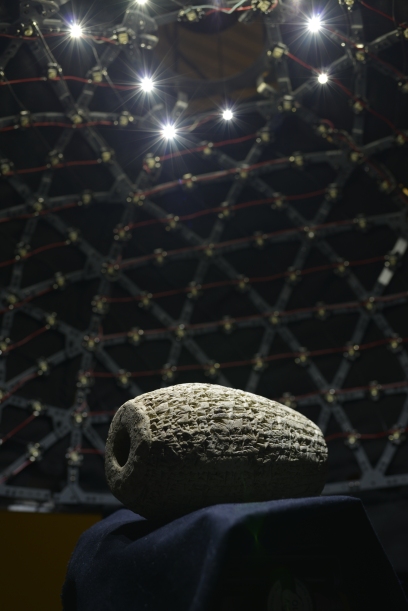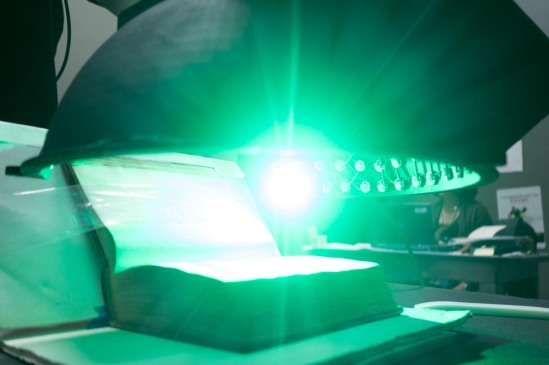 Between January 27th and February 3th the RICH team has been working together with the scientists and conservators of the J.P. Getty Museum and Research Institute in Los Angeles. Various artifacts of the Museum collection have been monitored and studied with Photometric Stereo such as medieval manuscripts, master drawings, bookbindings and daguerreotypes.
Between January 27th and February 3th the RICH team has been working together with the scientists and conservators of the J.P. Getty Museum and Research Institute in Los Angeles. Various artifacts of the Museum collection have been monitored and studied with Photometric Stereo such as medieval manuscripts, master drawings, bookbindings and daguerreotypes.
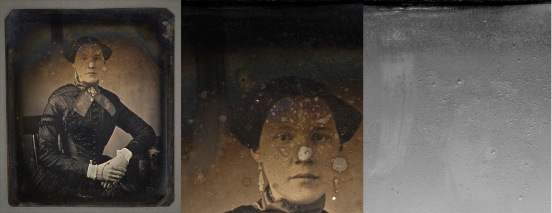
A daguerreotype by Jacob Byerly (1807-1883); left full image made with the White Light Microdome; middle a detail with raking light; right same detail with shaded filter showing degradation. Click on the image to enlarge; collection J. P. Getty Museum
Both White Light and Multi-Spectral Microdomes have been used. The RICH Project, the technical background and the research targets have been highlighted the on February 2nd during the lecture: Microdomes and Manuscripts: Multi-Spectral and Photometric Stereo Imaging for Illuminations, Drawings and Documentary Heritage. After the lecture, a hands-on workshop was given at the Imaging Studio of the Getty Center.

Mira Calligraphiae Monumenta (Georg Bocskay & Joris Hoefnaegel, 1561-62), folio 33; image with White Light Microdome, collection Getty Museum

Mira Calligraphiae Monumenta (Georg Bosky & Joris Hoefnaegel, 1561-62), detail, folio 33; Multi-Spectral Microdome; top left shaded filter; top middle Infrared light (850 nm); top right Red light (623 nm); below left Green light (523 nm); below middle Blue light (460 nm), below right UV light (365 nm)


